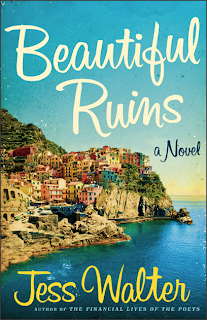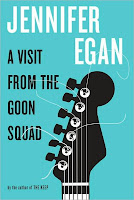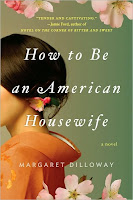
Imagine being a poor, motherless girl in rural Mississippi. Now, imagine being a poor, motherless 14 year-old pregnant girl in rural Mississippi and Hurricane Katrina is days from landfall. This is Esch, the protagonist of Jesmyn Ward’s award-winning novel Salvage the Bones.
This young mother-to-be lost her own mother five years ago after a complication during delivering her final child. Esch is the mother of the household to her three brothers. Randall aspires to be a basketball player, Skeetah’s sole focus is his prize-winning pit bull China, and Junior is a typical curious and rambunctious preschooler. The patriarch, known only as Daddy, is working frantically to prepare for the rapidly advancing Katrina and to protect his family despite their extremely limited resources.
With that brief introduction, Esch walks us through an eventful eleven days prior to Katrina’s landfall, the day that changed their lives forever, and one day after, offering a brief glimpse into what might become after such a horrific event. The Batiste family is preoccupied. Daddy with the storm, Randall with the basketball scouts, Skeetah with the dying litter his dog just birthed and Esch with her growing belly and how she will tell Manny. How she will tell her family.
Ward has created a complex and very real picture of poor, rural Mississippi life and the sacrifices families must make when disaster hits. Her words are rich, although a bit overwritten at times. She makes up for it with fully developed and engaging characters that sometimes make you shake your head, but that mostly you empathize for. Ward’s ability to make Katrina a character in this novel, was exceptional. The storm snuck in early on, whistling through trees, rustling through thorn-filled blueberry bushes, covering the sky in a gray haze and building a momentum that brought the story to a heart-stopping and devastating climax.
I recently read a column by magazine editor Greg Zimmerman where he wrote:
“Nothing is more real than fiction. Nothing helps us make sense of the real world more than fiction. Nothing instills in us empathy for others like fiction.”
I couldn’t agree more.
And, that’s why I would encourage you to read Salvage the Bones. It’s gritty and brutal and, at times, hard to read; but it’s important. Ward’s fictional Batiste family could be any poor, struggling family ravaged by a natural disaster that doesn’t have the luxury of leaving before landfall. They don’t have the luxury of choice. The only thing they can do is stay and hold onto each other, hoping for the best.
Rating: 4 stars
Pages: 273
Genre: Fiction


 Let me start by saying I love, love, LOVE
Let me start by saying I love, love, LOVE  When I saw the cover of Jennifer Egan’s A Visit from the Goon Squad, I immediately wanted to read it. I mean, isn’t it great? The composition and color and the tweaked out guitar strings are just perfect. And then I read the summary and I was kind of nonplussed. It seemed to echo the summaries of books like Bright Lights, Big City or Less Than Zero which I have had no desire to read (shock, horror, I know, whatever) about privileged people doing a lot of drugs and screwing up and maybe there’s redemption and maybe there’s not. Who knows? I haven’t read them. Go figure.
When I saw the cover of Jennifer Egan’s A Visit from the Goon Squad, I immediately wanted to read it. I mean, isn’t it great? The composition and color and the tweaked out guitar strings are just perfect. And then I read the summary and I was kind of nonplussed. It seemed to echo the summaries of books like Bright Lights, Big City or Less Than Zero which I have had no desire to read (shock, horror, I know, whatever) about privileged people doing a lot of drugs and screwing up and maybe there’s redemption and maybe there’s not. Who knows? I haven’t read them. Go figure. Let me start by saying I was less than thrilled to be reading Cutting for Stone. Before you get the wrong idea, let me clarify that statement. I really wanted to read this book. I was actually excited when it came up for my March Book Club. But then the excitement quickly faded and I realized that it was sixhundredandeightyeight pages (gulp) and I would have just a week to read it (unlike my fellow book clubbers who would have a month). Forget the gulps. This was freak out time.
Let me start by saying I was less than thrilled to be reading Cutting for Stone. Before you get the wrong idea, let me clarify that statement. I really wanted to read this book. I was actually excited when it came up for my March Book Club. But then the excitement quickly faded and I realized that it was sixhundredandeightyeight pages (gulp) and I would have just a week to read it (unlike my fellow book clubbers who would have a month). Forget the gulps. This was freak out time. Room by Emma Donoghue has been on my list for some time. I almost mandated it for my turn at book club in December, but then remembered I never mandate, always preferring to offer my fellow clubbers with a choice.
Room by Emma Donoghue has been on my list for some time. I almost mandated it for my turn at book club in December, but then remembered I never mandate, always preferring to offer my fellow clubbers with a choice.

 It’s confession time again. And if you are keeping track, this is my fourth confession to date. I needed an easy read this week, the week of Christmas and all; and I didn’t want to skate by on another book of poem’s or kiddie lit. So I did the next easiest thing: I picked up Hint Fiction: An Anthology of Stories in 25 Words or Fewer compiled by Robert Swartwood.
It’s confession time again. And if you are keeping track, this is my fourth confession to date. I needed an easy read this week, the week of Christmas and all; and I didn’t want to skate by on another book of poem’s or kiddie lit. So I did the next easiest thing: I picked up Hint Fiction: An Anthology of Stories in 25 Words or Fewer compiled by Robert Swartwood. This week’s pick comes courtesy of my book club, a group of dynamic women that have met for over six years and actually talk about the books we read. Oh sure we fit in the offshoots and the tangents where art imitates life, or catch up on work, lack of work, significant others, or a lack of others that are truly significant, and then we find our way back to the book, for better or worse. This month, it was for better, because not only was HOW TO BE AN AMERICAN HOUSEWIFE by Margaret Dilloway a great read, but we also got to talk to the author during our monthly ritual of dining and dishing.
This week’s pick comes courtesy of my book club, a group of dynamic women that have met for over six years and actually talk about the books we read. Oh sure we fit in the offshoots and the tangents where art imitates life, or catch up on work, lack of work, significant others, or a lack of others that are truly significant, and then we find our way back to the book, for better or worse. This month, it was for better, because not only was HOW TO BE AN AMERICAN HOUSEWIFE by Margaret Dilloway a great read, but we also got to talk to the author during our monthly ritual of dining and dishing.